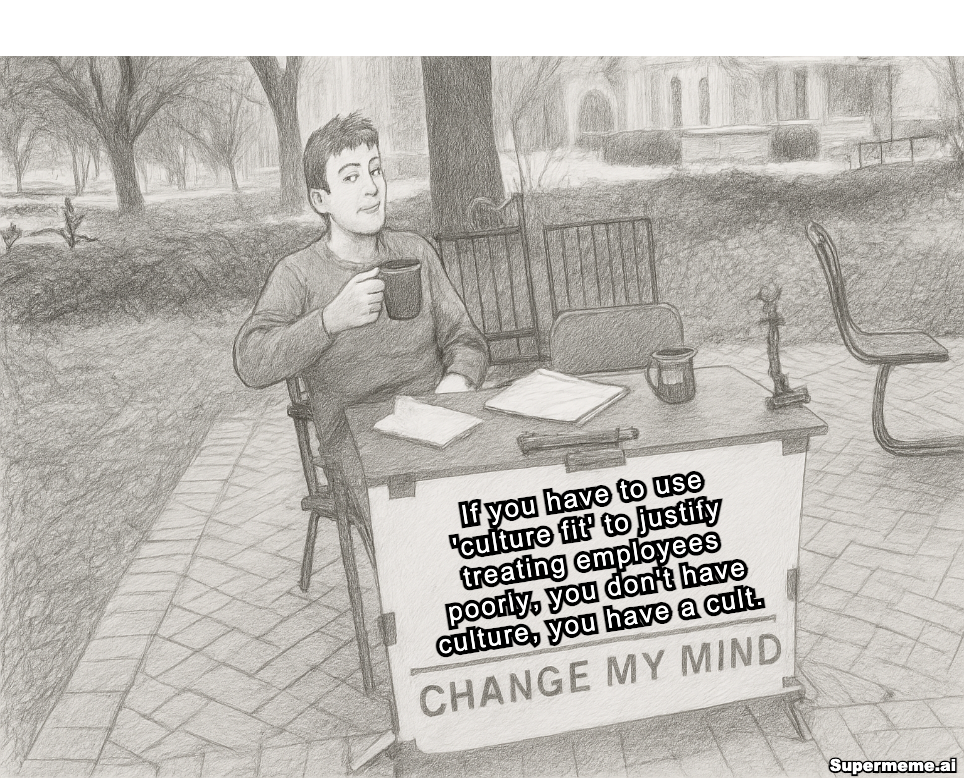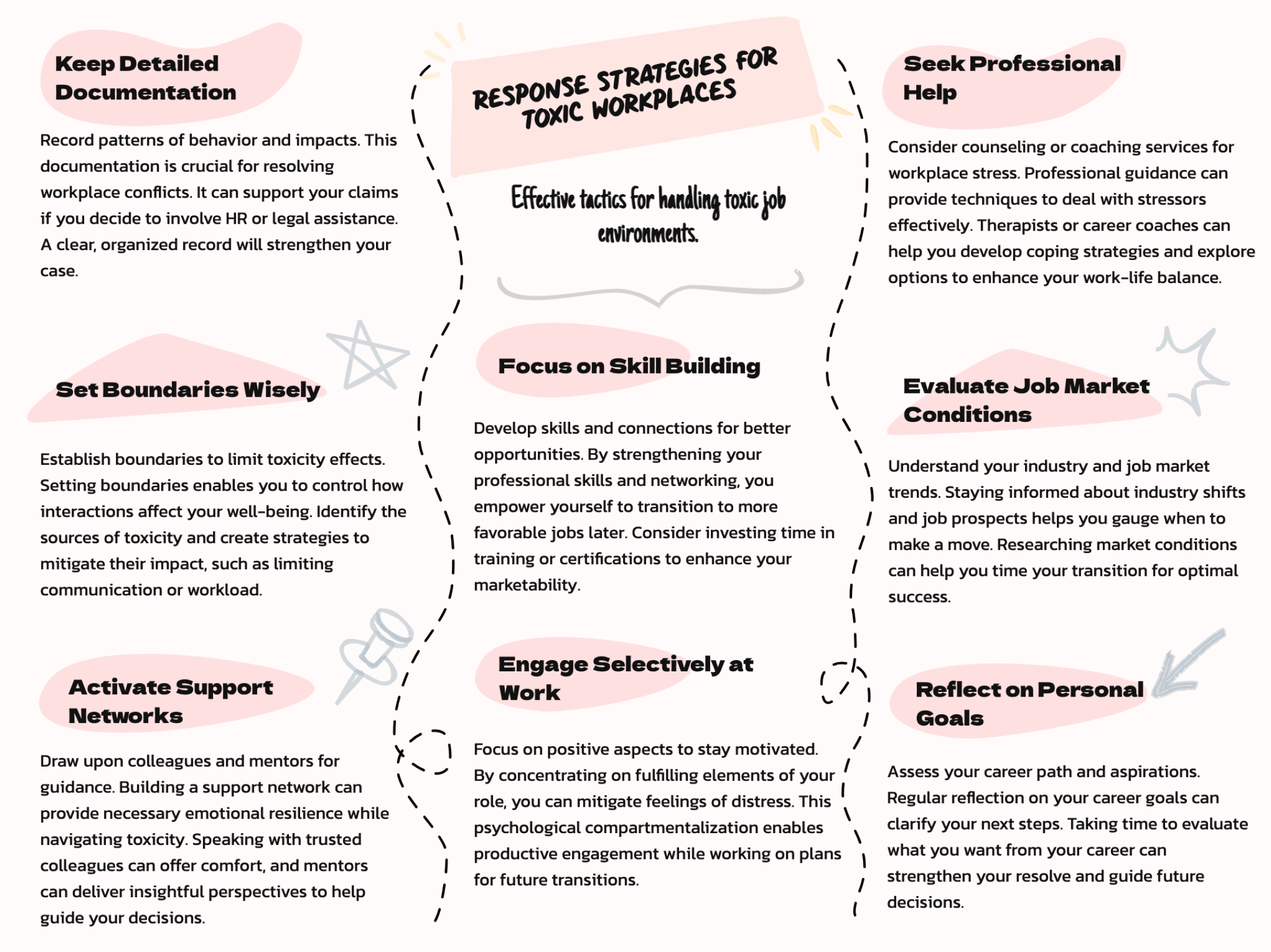ALorem ipsum dolor sit amet, consectetur adipiscing elit. Maecenas eu porta tellus. Mauris sit amet efficitur velit, vitae mollis ipsum. Cras a facilisis sem, vulputate accumsan diam. Praesent molestie, mauris nec dictum condimentum, sem metus lobortis orci, vitae auctor nunc ante et nunc. Phasellus dui ligula, hendrerit eget urna sed, porttitor sagittis libero. Nam tempor felis quis erat imperdiet pulvinar. Aenean euismod vitae nibh eu pretium. Cras quis elementum risus, nec ultrices felis. Nulla aliquet elementum erat et finibus. Quisque aliquam quam ultrices nibh congue sollicitudin
Everyone has difficult days at work. The project that goes sideways, the challenging client interaction, or the colleague who seems determined to test your patience. But there's a crucial difference between normal workplace friction and a genuinely toxic environment—one that can impact not just your career satisfaction but your mental and physical health.
The challenge lies in distinguishing between temporary challenges and systemic problems. Many professionals dismiss genuine warning signs as "just part of the job" or "having a rough patch," only to realise months or years later that they've been normalising a harmful environment. This recognition often comes after the workplace has already taken a significant toll on their wellbeing and career.
Research from the American Psychological Association shows that long-term exposure to toxic work environments correlates with increased risk of depression, anxiety, sleep disorders, and even cardiovascular issues. Meanwhile, a landmark study published in the Harvard Business Review found that healthcare costs at organisations with poor workplace cultures were 50% higher than at companies with healthier environments.
Beyond the personal cost, toxic workplaces gradually erode professional capabilities. Creative thinking diminishes. Risk-taking decreases. Professional networks shrink as employees isolate to protect themselves. Career advancement stalls not because of lack of ability, but because survival becomes the primary focus.
Recognising toxic patterns early allows professionals to take appropriate action before significant damage occurs. This might mean addressing issues directly, building protective boundaries, finding internal allies, or making strategic exit plans.

While every industry and organization has unique dynamics, certain patterns consistently indicate toxicity rather than normal workplace challenges. Here are seven warning signs that shouldn't be dismissed, regardless of industry, role, or career stage:
Normal Workplace: Occasional tiredness after intense periods or challenging projects, with recovery during downtime.
Toxic Warning Sign: Constant exhaustion that doesn't resolve after weekends or vacations. Sunday evening dread that triggers physical symptoms. Requiring increasing amounts of recovery time just to function at a baseline level.
Physical and emotional depletion isn't just about workload but about the psychological tax of navigating a toxic environment. When the simple act of going to work requires steeling yourself emotionally, the resulting exhaustion differs qualitatively from healthy work fatigue. Pay particular attention if colleagues normalise statements like "you'll get used to feeling this way" or "everyone here is exhausted."
Normal Workplace: Occasional miscommunications or tensions that get resolved through clarification and good-faith dialogue.
Toxic Warning Sign: Information regularly withheld as a power play. Public shaming or criticism used as a control mechanism. Important decisions communicated in ways designed to minimise input or discussion.
Communication in toxic environments becomes less about clarity and collaboration and more about control and hierarchy reinforcement. Watch for patterns where questions are treated as insubordination, where transparency selectively disappears around controversial issues, or where communication channels shift to exclude certain people from important conversations.
Normal Workplace: Occasional oversights in recognition that get corrected when addressed. Imperfect but generally fair attribution of contributions.
Toxic Warning Sign: Systematic pattern where certain people's contributions are minimised while others consistently receive credit regardless of actual input. Recognition and visibility opportunities distributed based on favoritism rather than merit.
Pay attention not just to who gets formal recognition but to whose ideas are remembered as belonging to whom. In toxic environments, success is often attributed upward or to favoured team members, while failures flow downward to those with less political capital. This pattern creates a fundamental disconnect between contribution and recognition that fuels cynicism and disengagement.

Normal Workplace: Occasional high-demand periods with recognition of the extraordinary nature of the ask. Respect when people assert reasonable limits.
Toxic Warning Sign: Consistent expectations that work will spill into personal time without acknowledgment of the sacrifice. Subtle or explicit penalties for maintaining healthy boundaries. Glorification of those who demonstrate unhealthy work patterns.
Particularly insidious is when boundary violations become framed as indicators of commitment, passion, or "cultural fit." When statements like "that's what it takes to succeed here" or "we're like a family" are used to justify unreasonable expectations, it signals that boundaries aren't respected as legitimate needs but seen as character flaws or lack of dedication.
Normal Workplace: Occasional difficult decisions with transparent rationales. Consistent application of stated principles even when inconvenient.
Toxic Warning Sign: Stated values that bear little resemblance to rewarded behaviours. Different ethical standards applied based on hierarchy or favouritism. Pressure to compromise personal ethics for organisational convenience.
The ethical gap in toxic workplaces isn't just about dramatic scandals but about daily contradictions between what the organization claims to value and what it actually rewards. Pay attention to whether raising ethical concerns is treated as constructive or as troublemaking, and whether ethical considerations consistently fall away when they conflict with other priorities.

Normal Workplace: Healthy debate and occasional tension within an overall context of respect. Mistakes treated as learning opportunities rather than character indictments.
Toxic Warning Sign: Environment where people are afraid to speak honestly, ask questions, or admit uncertainty. Blame-oriented responses to problems. Visible punishment of those who raise concerns.
Harvard Business School professor Amy Edmondson's research identifies psychological safety—the belief that you won't be punished or humiliated for speaking up with ideas, questions, or mistakes—as a crucial indicator of team health. Its absence correlates strongly with both individual distress and team dysfunction. When people spend significant energy self-censoring and defensive positioning, little remains for meaningful contribution.
Normal Workplace: Leaders whose emotions may occasionally show but who maintain basic consistency and professionalism. Tension that relates to legitimate business challenges.
Toxic Warning Sign: Work environment that revolves around managing leader emotions rather than achieving business outcomes. Walking on eggshells due to unpredictable reactions. Team energy consumed by anticipating and accommodating leader moods.
Perhaps the most reliable indicator of workplace toxicity is when a significant portion of collective energy goes toward managing the emotional state of those in power rather than toward the actual work. This creates a fundamental distortion in organisational focus, with survival politics superseding contribution and performance.
While any of these warning signs deserves attention, the clearest indicator of toxicity is not their isolated occurrence but their combination into persistent patterns. A single incident of miscommunication differs fundamentally from a sustained pattern of information manipulation. An occasional leadership frustration differs from a climate of perpetual emotional management.
The key questions to ask are:

While "quit your toxic job" makes for compelling career advice headlines, the reality is often more complex. Financial constraints, market conditions, geographic limitations, and career trajectory concerns can all complicate the decision to leave.
A nuanced approach includes:
Documentation: Maintain detailed records of problematic patterns, including dates, witnesses, and impacts. This creates clarity about the scope of the issue and provides necessary information should you need to involve HR or legal resources.
Boundary Reinforcement: Identify the specific toxicity vectors affecting you most directly and establish targeted boundaries to reduce their impact. This might include communication protocols, workload management strategies, or emotional distancing techniques.
Support Network Activation: Develop connections with colleagues who share your experience without falling into unproductive venting cycles. Seek external perspective from mentors who can offer objective guidance based on broader industry context.
Strategic Positioning: If immediate departure isn't feasible, focus on building skills, achievements and connections that strengthen your market position, creating more options for eventual transition under better conditions.
Selective Engagement: Identify the aspects of your role that remain meaningful and where you can make contributions without excessive exposure to toxic elements. Create psychological compartmentalization that allows you to engage productively while planning longer-term moves.
Perhaps the most challenging aspect of toxic work environments is the way they gradually distort perception. The longer one remains in harmful conditions, the more those conditions come to seem normal or inevitable. This normalisation represents a significant career risk, as it can lead professionals to either:
Maintaining clear recognition of toxicity—without becoming cynical about all workplace dynamics—represents a crucial career skill that supports both immediate wellbeing and long-term professional development.
At WCFC Academy, we believe that professionals deserve environments where they can do their best work without compromising their wellbeing. Our career coaching program helps participants accurately assess organisational culture, establish effective boundaries, and develop strategic plans for thriving even in challenging environments.
We focus not just on identifying toxic patterns but on developing the practical tools to protect yourself while making deliberate choices about your career trajectory. Whether navigating a currently challenging situation or recovering from past workplace trauma, our evidence-based approach helps restore your sense of agency and purpose.
Visit www.wcfc.academy to learn how we can help you transform workplace challenges into strategic career decisions that honour both your professional ambitions and your fundamental wellbeing.
“Raesent molestie, mauris nec dictum condimentum, sem metus lobortis orci, vitae auctor nunc ante et nunc ligula”



Your potential is infinite. Our mission is to activate and unleash it in the right environment.